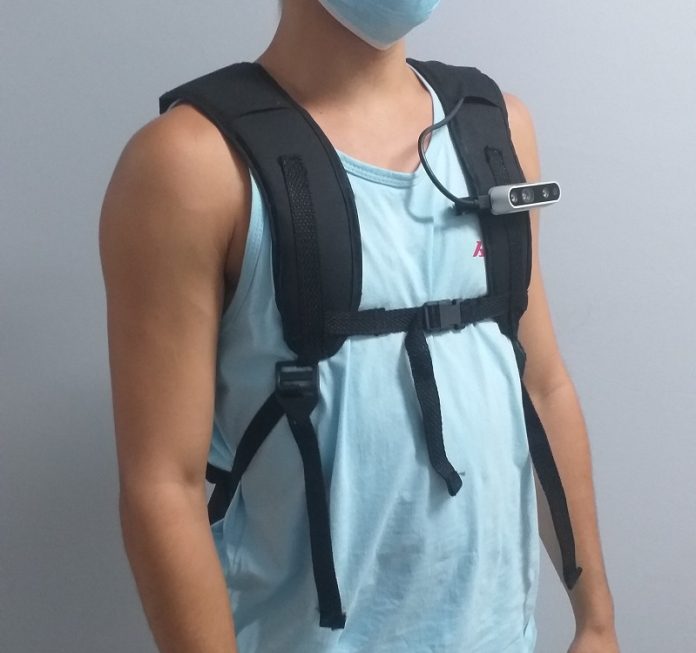
A group of researchers in Brazil has developed a smart wearable device that could make walking safer and more independent for people who are blind or visually impaired.
The device, called NavWear, is worn like a backpack and uses vibrating signals to alert users when obstacles are nearby.
Created by researchers from São Paulo State University (UNESP) and the Federal University of Espírito Santo (UFES), the device features a small camera with depth-sensing technology—similar to how human eyes perceive space.
The camera detects objects in the environment, and a compact computer processes the images in real time.
If something is in the way, vibration motors in the backpack straps alert the user: the left strap vibrates if something is on the left, the right strap for the right, and both straps if an obstacle is straight ahead.
Aline Darc Piculo dos Santos, one of the creators of NavWear, explains that the team chose vibrations instead of sounds to send alerts because people who are visually impaired often rely heavily on hearing to navigate.
Using sound alerts could interfere with this important sense. Santos developed the device during her doctoral research at UNESP and now teaches at the University of São Paulo.
The goal of NavWear is not to replace the white cane, which many users already depend on, but to add extra protection—especially for detecting objects above the waist.
A cane typically helps detect curbs or ground-level barriers, but it can miss obstacles like low-hanging signs or tree branches. The backpack helps fill in those gaps, making navigation safer.
The development of the prototype involved collaboration between designers and engineers. The team focused not just on making the device functional but also comfortable and easy to use.
They also worked with a local organization for blind individuals to better understand user needs. Many assistive devices focus only on basic function, but NavWear was designed with user comfort and interaction in mind to increase satisfaction and acceptance.
In a small study with 11 participants, including blindfolded individuals and a mobility specialist, testers found that the device helped reduce collisions in a simulated walking route. Participants said they felt safer and had an easier time completing the course.
The team wasn’t able to test the backpack with people who are blind during the development process due to COVID-19 restrictions, so more research is needed.
Still, the early results are promising and suggest that NavWear could become a valuable tool for safer navigation in outdoor environments.



